In South Australia we pay a lot for electricity.
If you feel the need to respond to that statement by saying, “Well, whoop-de-doo! We pay a lot for electricity in Newcastle,” I will understand. All Australians pay too much for household electricity. This is true whether you look at historical prices or at countries you’d expect us to be similar to such as the United States or Canada.
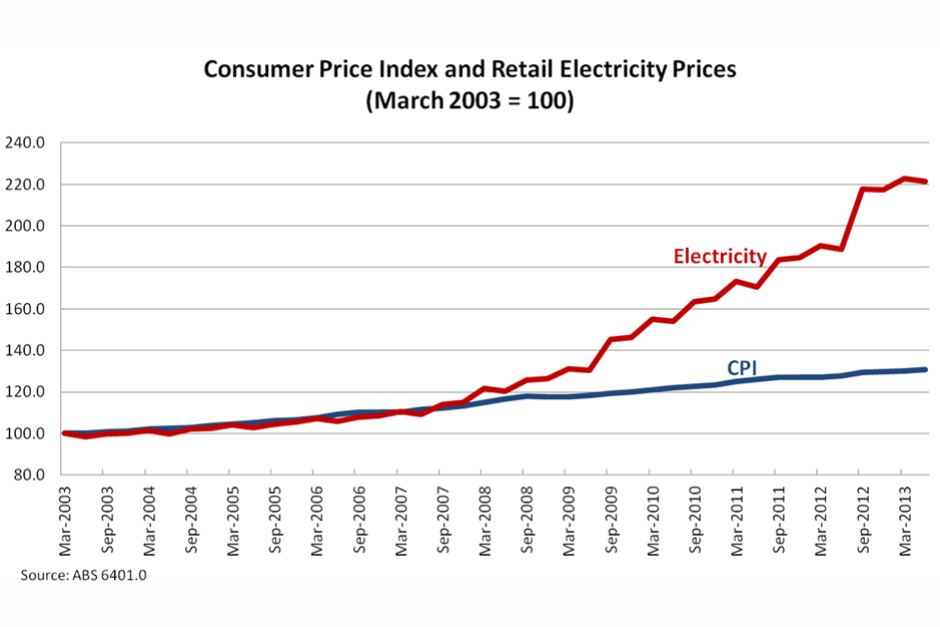
Image Source: ABC News
But South Australia’s electricity prices are the highest in the nation, as I recently demonstrated, and, unlike just 10 months ago, the total cost of electricity for a typical household is now far more than for any other state or territory. Price increases at the beginning of this financial year mean that no matter how you slice it, South Australians are the absolute champions at paying the most for grid electricity.
But when it comes to the charge per kilowatt-hour, South Australians have always paid more than people in other states. At least we have in living memory. If you have access to pre-World War 2 data and can prove me wrong, please go right ahead.
Coalition politicians and people on the internet who don’t know what they’re talking about — and there are at least two or three of them — confidently state that South Australia’s high electricity prices are due to renewable energy as though it’s a god revealed truth, while ignoring the fact that electricity prices have always been high here. What never seems to get mentioned is that if half the electricity now generated in South Australia didn’t come from rooftop solar power and wind power, then the electricity price we have suffered would have been even higher.
Why the cost of electricity has more than doubled in real terms throughout Australia over the last decade is a long and sordid tale I am not going into today. Instead, I’ll tell you the mildly less sordid tale of why South Australians have always paid more per kilowatt-hour than in the rest of the country.
There are a number of factors which have applied since well back in the 20th century:
- No cheap and convenient coal deposits.
- Little industry to moderate electricity demand
- No hydroelectricity
- Heavy reliance on gas generation
And there are factors that have mostly only applied this century:
- Heavy air conditioner demand during heatwaves
- Not enough competition in the state electricity market
- Soaring Natural gas prices
SA Has Renewables Because It Has High Electricity Prices — Not Vice Versa!
I’m going to go into details of why South Australia’s electricity prices have always been high, but first I want to make a very important point clear. It’s so important I am going to pay for additional black photons so I can print it in bold type on your screen:
South Australia doesn’t have high electricity prices because it has renewable energy. South Australia has renewable energy because it has high electricity prices.
If you were going to build a wind farm, where would you put it? In the state where it would make you the most money or not in the state where it would make you the most money?
When you look at it that way it’s pretty obvious why SA has the most wind power capacity. Also, when you consider that roof top solar energy will pay for itself faster in SA than in any other state it’s not surprising we have the most installations per capita.
So the people who say South Australia has high electricity prices because of renewables have causality the wrong way around. (That’s a polite way of saying they’re fucked in the head.)
No Cheap And Nasty Coal For SA
For over 100 years Australia has produced cheap electricity from coal. That is, cheap in terms of what people were charged for it and not cheap in terms of harm to their health or damage to climate stability. But coal power has always been more expensive in South Australia because it doesn’t have the conveniently located and low cost to extract deposits the eastern mainland states do.
There is plenty of coal in South Australia, but rather than being cheap and nasty, it’s just nasty. The best deposit that could be found was at Leigh Creek — a 250km rail trip from the coal power stations that used to be at Port Augusta.
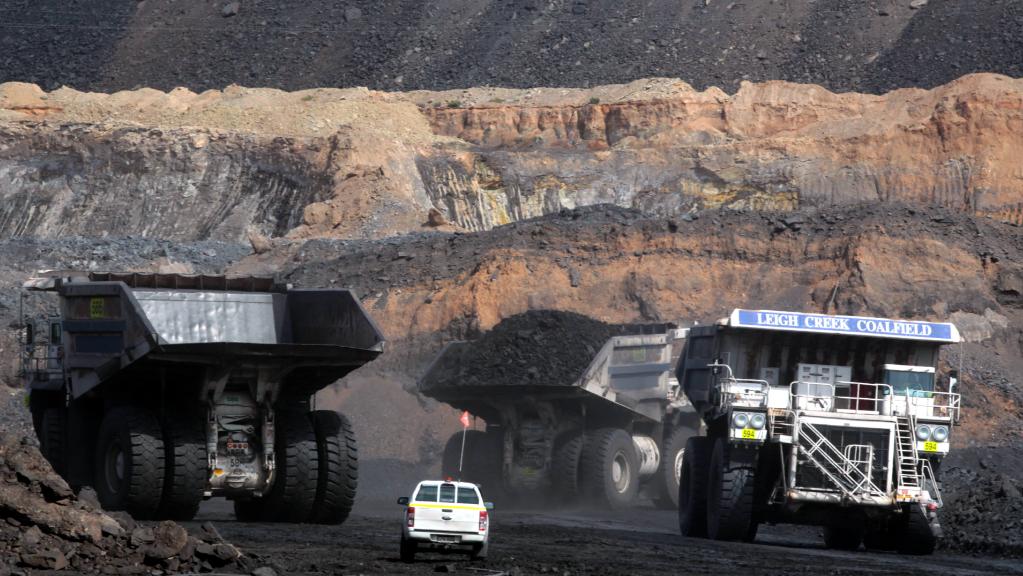
The now closed Telford Mine at Leigh Creek. (Image: Adelaide Advertiser)
The site contains low quality sub-bituminous black coal laid down over 200 million years ago in the late Triassic and it was during this period that 76% of all species went extinct. If Tony Abbot reads this he will no doubt claim it was the formation of the coal that caused the extinctions and if we want to prevent future extinctions we should un-form the coal by digging it up and burning it. But don’t listen to Tony. He’s a few goat sacrifices short of a volcano god.
The Leigh Creek coal is lower quality than the black coal currently mined in NSW and Queensland but better than Victoria’s brown coal. However, it is found in seams only a few meters thick rather than the 100 meter seams that can be found in Victoria1. Its low quality and high cost of mining and transportation meant South Australian coal power was always going to be more expensive than in the contiguous states to the east.
Before SA’s Northern Power Station closed down for good in 2016 it was seeking a price of 5 cents a kilowatt-hour in order to remain open. Back when Australia had a carbon price, brown coal power stations in Victoria remained in operation while receiving an average price of less than 2 cents per kilowatt-hour. After adjusting for differences in coal royalties between the states, brown coal power station continued to operate while receiving less than half what Northern Power Station required to remain open.
South Australia’s Grid Is Very Peaky
There’s not a lot of industry in South Australia and never has been. These days mining generally draws a steady 100 megawatts or so, but industry still makes up a smaller portion of total electricity consumption than in other mainland states. As industrial electrical demand tends to be fairly constant, or even increases when demand and thus prices are low, it helps maintain demand. As a result, late at night when almost everyone except bloggers are asleep, electricity consumption can fall to low levels.
While there’s not much industry in South Australia, there can be plenty of bloody heat in the summer. During a heatwave electricity demand soars as a vast number of air conditioners labour to keep us alive in temperatures that have reached as high as 45.7 degrees.
The extremes in demand resulting from a lack of industry and high temperatures means dispatchable generation, which is capacity that can be switched on and off as needed, spends a greater portion of its time sitting idle than in other states and this contributes to higher costs.
No Hydroelectricity
While Australia is the second driest continent after Antarctica, hydropower supplies a larger portion of our electricity than in most developed countries. We easily beat Japan which has more mountains and rain than you can poke a trout at2. The eastern states all have hydroelectric dams which are very useful for helping meet peak demand. But South Australia, being very flat and very dry, has none3.
Not Enough Competition
At the end of the 20th century South Australia’s electricity sector was privatized and an electricity market created. This enabled a new problem to arise, which was inadequate competition in that market. Usually the limited amount of competition compared to other states results in electricity prices being slightly higher than what they would be otherwise, but sometimes things get ridiculous. In July 2016 a reduction in competition caused by the shutdown of the Heywood interconnector with Victoria allowed South Australian generators to force wholesale electricity market prices to over 5 times their average in July the previous year.
Reliance On Gas Generation
Other states generate an average of around 10% of their electricity from natural gas. But back in the 20th century, before a single wind turbine was constructed or solar panel connected to the grid, SA’s generation was 30% coal and 70% gas4.
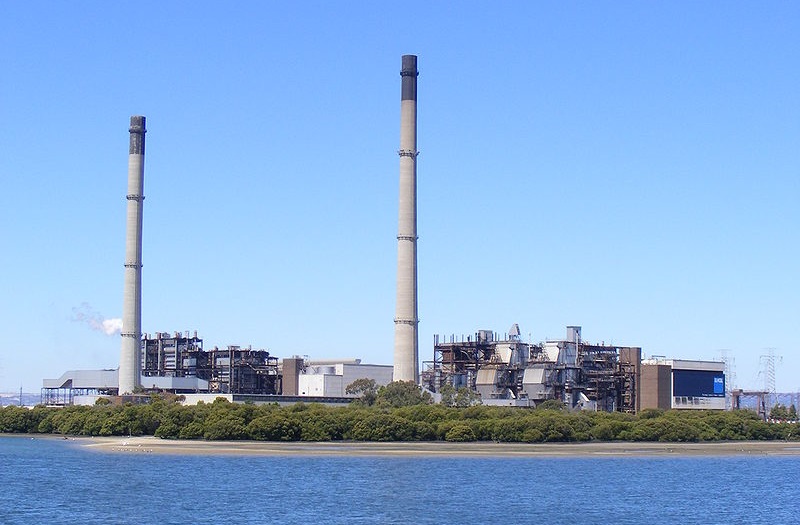
South Australia’s largest power station, the 41 to 52 year old gas fired Torrens Island , enjoys beaches, oceans, high electricity prices, and long hard maintenance sessions during heatwaves. (Image: Wikipedia.)
The main reason why the state relied so heavily on natural gas was because back then Australian natural gas prices were, outside of some oil producing countries, the cheapest in the world. At the time there were no facilities to export natural gas and so its price was able to remain far below international levels. Because coal power was expensive by Australian standards and minimum demand low, this made it the lowest cost option for the bulk of South Australia’s electricity generation. But this reliance on gas left the state very exposed to increases in its price. As eastern Australia’s natural gas reserves were being gradually depleted future price rises seemed a certainty.
But instead of running short of gas, reserves and production massively increased due to the development of coal seam gas and fracking technologies. While it would be reasonable to expect this to lower prices, the increased supply actually led to gas becoming far more expensive as an export facility was built in Gladstone and gas prices rose towards international levels.
When WA started exporting natural gas on a large scale it reserved a portion for domestic use to keep its price for Western Australians low. This was not done in eastern Australia, which would have been fine if the Federal Government had acted to rapidly expand renewable generation to limit the effect of gas on electricity prices, but they didn’t budge from their usual position, which is bent over backwards and doing everything they can to slow the uptake of renewables.
This graph from the Australian Energy Regulator shows how Adelaide gas prices have risen by over 75% in the past 2 years:
Prime Minister Turnbull has interfered in gas markets and this is supposed to lower prices, but currently they are still way too high.
Renewables Have Limited Electricity Price Hikes
Last century around 70% of South Australia’s electricity was generated from natural gas. Things have changed a lot since then, with this graph of growth in wind generation being one example:

Image Source: AER
Rooftop solar energy and wind power have eliminated highly polluting coal power stations from the state and have also reduced natural gas generation. Last financial year electricity generation in South Australia was:
- 39.2% wind
- 9.2% rooftop solar power
- 1.1% diesel
- 50.5% natural gas
Wind and solar power have continued to expand since then so natural gas generation will now be under 50%. This means that, in addition to allowing the closure of the state’s two coal power stations, renewable energy has reduced the portion of electricity generated from gas by over a quarter, down from 70% to less than half and limited the electricity price increase that has occurred due to rising natural gas prices.5
But despite renewable energy limiting electricity price increases, the Australian Federal Government, the people who lead this country, have blamed it for the increase caused by soaring natural gas prices. This behavior makes me wonder if some Coalition politicians have a habit of naming their dog Renewable Energy so when they get home they can kick it there as well.
Footnotes
- Closely overlapping seams can make for brown coal deposits up to 230m thick in Victoria’s Latrobe Valley. ↩
- Japan has at least 63 hydroelectric dams. They also have 1,200 mini hydro systems and when I was there I kept stumbling across them. ↩
- Well, it has a very small mini hydro system built in 2003. It is now 3MW with a capacity factor of around 18% which means it supplies an average of around half a megawatt power. This comes to less than 0.04% of the state’s electricity consumption. ↩
- With perhaps 1% to 2% diesel squeezed somewhere in that mix as well. ↩
- In addition to renewable energy reducing the portion of electricity generated from gas in the state, the building of interconnectors with Victoria has reduced the portion of electricity consumed that comes from natural gas, as only a small percentage of imported power is generated from it. In the 2016-2017 financial year 50.5% of the electricity generated in South Australia was from gas but thanks to imports only about 40% of the electricity consumed was from gas. ↩

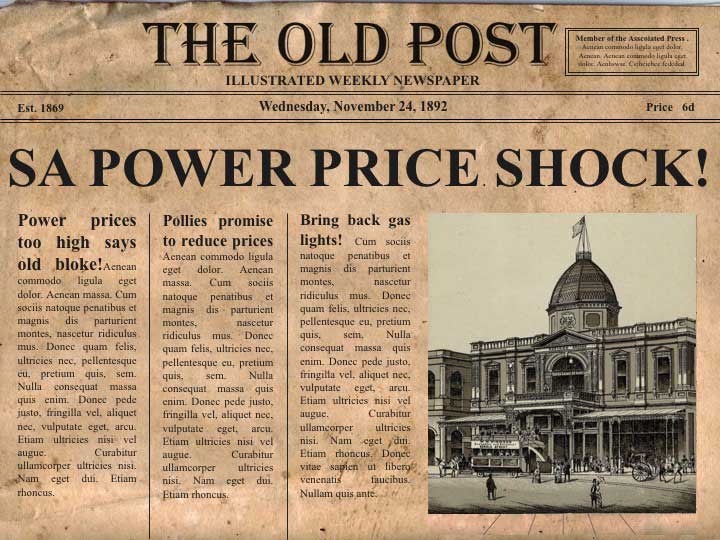
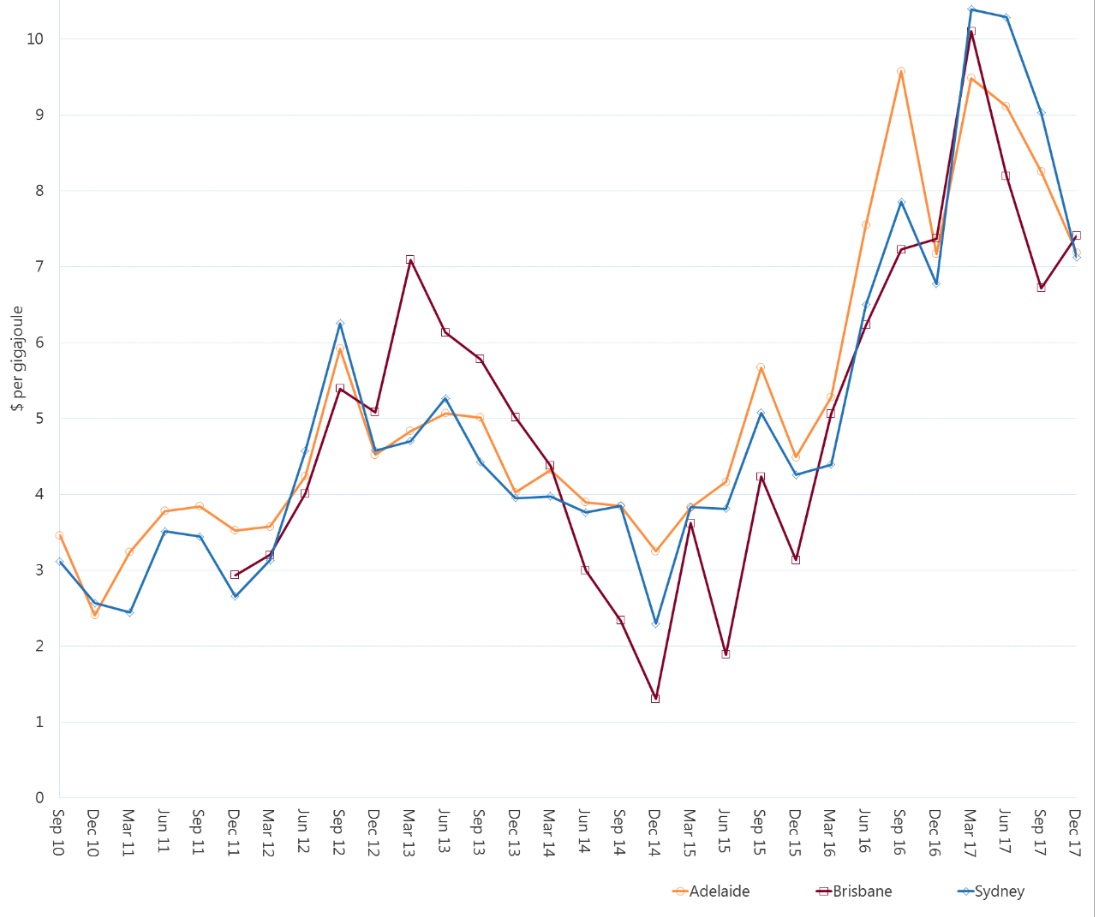
 RSS - Posts
RSS - Posts



Like a broken record. I keep saying China pays about 11c/ kWh and India even less. And this is the figure we should be paying as well.
Now, what is it exactly that they mine in Wooltana, SA? And why can’t it be used for baseload power? At least it’s clean and doesn’t add to the carbon equation.
I’ve lived on a yacht, off the grid, for almost 6 years with solar which was great and a wind generator which was beyond useless. There were many occasions when we had to start the engine up to charge the batteries when we had consiecutive overcast days.
I’m a great fan of renewables but neither wind nor solar can ever be considered reliable on a 24/7 basis. We still need baseload, it’s a bitter pill to swallow unless we want all of society to live a minimalist off grid existence, which, I’ll accept is a far healthier lifestyle.
SA with batteries and an array of diesel or gas turbine generators pretty much proves the point that we need to carry the capability of constant capacity to meet the odd peak demand. And this is never cheap.
Interesting comments Niels particularly since living aboard is one of the options I’m currently considering.
A question though:- Why was the windgen ‘beyond useless?” I’ve had a huge amount of experience with solar panels, and never got around to setting up a turbine; but always assumed it was a good back-up idea ~ since when the sun doesn’t shine one would expect the wind to blow.
Does your comment relate exclusively to windgen problems on a vessel or generally?
You’d get a fight from me on the argument that solar/wind isn’t reliable on a 24/7 basis However, I’d agree in general that the cited ‘base-loads’ (to run public facilities like trains, traffic-lights, TV stations, etc) would need to be powered otherwise.
On that level I’ve long been a advocate of nuclear power (produced in the ‘outback’ to accommodate the inevitable accident) or hydro-power which ~ apart from the Snowy River Scheme has never been properly explored.
eg: The Murray river falls some 2000 foot in its journey; Port Phillip Bay (among probably hundreds of other inlets) has the capacity to act as a (twice-a-day) self-filling dam, and can be tapped to run generators for a measely (estimated) 100-billion dollars, including the distribution networks.
But personally I’m a DIYer with a natural bent for self-sufficiency. So I’d be very interested in some detail re. your comments about wind-turbines on board a yacht.
Incidentally, did you ever do any off-shore cruising?
Nuclear power can’t be in the outback because it needs too much fresh water for cooling (you don’t want to use salt water because corrosion).
Note the really hot days are the ones you need the power on … and they are also the one that warms the river sufficiently that the nuke plant doesn’t want to run at 100%.
Note the really hot days tend to be sunny and windy,
It is the market system itself that is responsible for pushing up the average price of power. Generators game the system all the time only connecting when the price is right. This process also contributes to frequency instability in the grid as demonstrated by a recent article in Nature Energy. Every half hour as the spot price changes, the frequency will shift, caused by rotating machines attempting to synchronise. More competition in the market will not change this and may make it worse. The only way to lower power prices is through nationalisation as power is a critical utility for all of us.
Good work Ron. Such informative stats. ‘Aint politics wicked tho !!
When did all the electricity privatisations take place?
Is there a correlation between privatisations and higher prices?
I must have missed what your actual rate is.
What is your actual rate ?
This recent article shows what the typical charges are in every capital:
https://www.solarquotes.com.au/blog/electricity-prices-australia-2018/
In South Australia it is now usual for people to pay a per kilowatt-hour charge of around 34.5 cents after discounts are applied.
This article was worth it just for the Tony Abbott analogy that he’s ‘a few goat sacrifices short of a volcano god.’
He and unfortunately many other “leaders” seem to suffer from this condition.
Your headline is deceiving Ronald. As you know it is a cut and paste of a French newspaper with your choice of headlines inserted
What? But I specifically paid for a Latin newspaper with my own headlines inserted! (Thank god for Australian consumer guarantees…)
The politician’s fallacy “renewable energy causes high prices.”
You are right Ron it should say – “high prices caused renewable energy.”
The numpties got the correlation wrong!
Capitalism at work.
Lets get real on the cost of renewables. Whether its the chicken or the egg that came first is almost irrelevant. If there were no subsidies on renewables coal would be more than competitive and the cost of renewable electricity would skyrocket.
Its only the Utopian view that renewables can provide all the power that has put SA in the situation that is now. And JW is doubling down on this with a goal of 75%. Good luck with that. Now imagine when the subsidies on renewables is cut or removed, electricity will end up a luxury not a household basic it should be.
Steve, how would the removal of subsidies for renewable energy raise the price of electricity? If Australia’s Renewable Energy Target, which provides the only substantial subsidy and is being phased out, was suddenly ended how would that enable wind farms to charge higher prices on the wholesale electricity market or increase the cost of electricity produced by solar panels on your roof?
Apparently Western Australia is another country altogether on the other side of the world. I don`t know why i bother to subscribe to Solar Quotes at all·
I’m afraid Western Australia is like another country as it is not connected to the inaccurately named National Electricity Market. This results in WA sometimes being ignored in discussions on energy, but I do try to keep an eye on what’s happening there.
In this article I could have mentioned that WA’s coal resources aren’t as good as in the three big states to the east and so in that respect is a little similar to South Australia. But while the SA government was open to renewable energy WA leadership seems to have been very slow to come around, despite having excellent solar and wind resources.
Quite right , desperation leads to innovation in renewables and even historically in energy production
SA papers had consistent hysteria about energy insecurity in 19thC , no coal for domestic use, copper smelting, coal gas, steam trains , electricity. All coal was shipped from Europe or eventually , east coast. World wars,strikes in NSW and U boat harassment were the last straw during WW2 , causing cancellation of hospital operations and the overland train to Melbourne. Only then in desperation and to be independent , did Playford start digging and burning SA brown coal . It allowed post war industrialisation.
Coal power generation was always expensive but in the time totally necessary.
“South Australia’s Electricity Has Always Been Expensive”
You don’t seem to present any evidence whatsoever for this statement by giving any historical prices of SA compared to other states.
For instance any example prices before 1990.
The fake newspaper graphic doesn’t help your argument either IMO.
jeffrey,
Here’s The Conversation’s article “FactCheck: does South Australia have the ‘highest energy prices’ in the nation and ‘the least reliable grid’?”, dated 13 Mar 2018
See: http://theconversation.com/factcheck-does-south-australia-have-the-highest-energy-prices-in-the-nation-and-the-least-reliable-grid-92928
Who passed legislation in 1998 to privatize the then state-owned Electricity Trust of South Australia (ETSA) that had built and operated the Northern and Playford power stations? – The Olsen Liberal SA government, reneging on promises not to privatize in the lead-up to the 1997 SA state election.
See: https://en.wikipedia.org/wiki/Electricity_Trust_of_South_Australia
Perhaps you should be blaming a succession of state and federal governments (Labor, Liberal and COALition) over a period of more than a decade for a lack of any coherent, effective energy planning?
Sorry nothing about SA always having higher in the past in that article that I could find.
I was searching for the prices set by ETSA compared to other states.
Prices did drop for about a decade after the privatisations up to around 2005.
Then other factors came into play.
There are many countries with much cheaper prices than Australia with privatised markets, for example US and Canada.
jeffrey,
You state:
“There are many countries with much cheaper prices than Australia with privatised markets, for example US and Canada.”
Canada has committed to phase-out coal usage by 2030.
See: http://ieefa.org/blogs-canada-u-k-netherlands-pact-phase-coal/
USA appears to be having record closures of coal-fired power plants in 2018.
See: http://ieefa.org/ieefa-report-u-s-likely-to-end-2018-with-record-decline-in-coal-fired-capacity/
New renewables with ‘firming’ are now cheaper than new coal, gas and nuclear electricity generation technologies.
See my comment: https://www.solarquotes.com.au/blog/energyaustralia-solar-subsidy-mb0883/#comment-351098
Why dwell in the past when we need to be looking forward to meet the looming critical and urgent challenges?